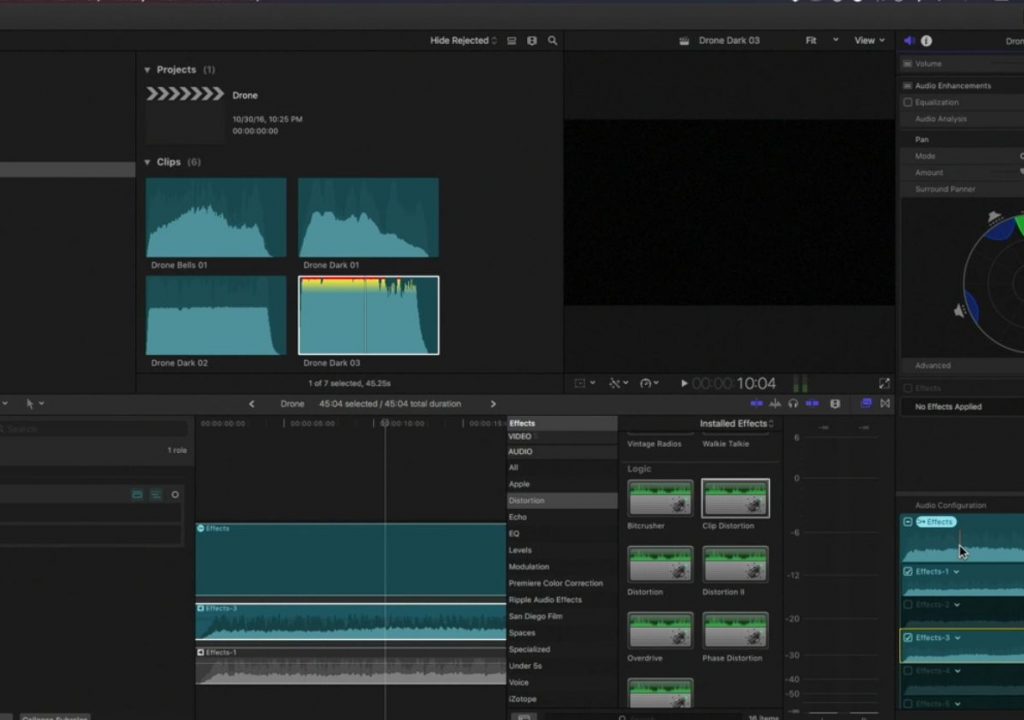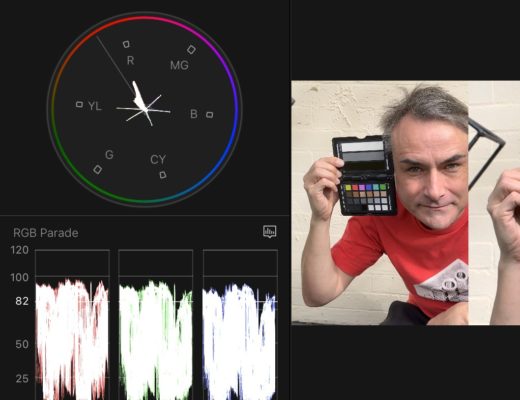https://www.youtube.com/watch?v=KTNE9JX5oD8&feature=youtu.be
This week on MacBreak Studio, Steve Martin from Ripple Training explains how Final Cut Pro 10.3 now handles your audio signal path.
While you may already be familiar with the ways you can now assign roles on import (or after), customize subroles, organize roles into lanes, and mix based on roles, once you start applying effects to clips and clip components, it’s important to understand how Final Cut Pro X handles those effects.
Steve starts by showing us how to take a 5.1 surround sound clip and break it into its separate components in order to adjust each separately. So, for example, you can take audio from one of the 6 channels and pan it exactly where you want in the 5.1 space, and even automate the panning to change over time, moving from speaker to speaker.
He then applies effects to both the clip and the component levels. This is where things get interesting. In earlier versions of Final Cut Pro, if you had a clip with multiple audio components (for example, microphones from two separate people), Final Cut would mix those components together to create a single output for that clip. But now, that no longer happens: as long as no effects are applied at the clip level, every clip keeps a separate output for each subrole. So if you apply an effect to a component – for example, a compressor on the mic for one speaker – it maintains that effect on that subrole throughout the mix. This is also true for effects applied to subrole components in a compound clip.
However, if you apply an effect at the clip level, so that it affects all subroles within the clip, the audio components are mixed together through that effect. Apple calls these “mixdown effects”, and Final Cut adds a mixdown icon on the clip in both the Timeline and in the Inspector to remind you that there is at least one effect apply at the clip level.
If all the audio components in the clip are in the same parent role, than the audio is routed through the parent role – for example, Dialogue or Effects. But if your clip has subroles from multiple parent roles, then Final Cut creates a new parent role called Mixed Audio.
This new signal path behavior is powerful because it allows you to maintain integrity to your effects applied to specific subroles. Check it all out above. To get deeper into audio and all the new features of Final Cut Pro 10.3, check out our In-Depth training.

Filmtools
Filmmakers go-to destination for pre-production, production & post production equipment!
Shop Now













